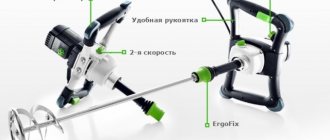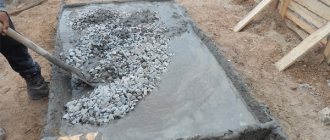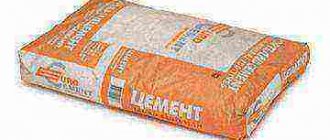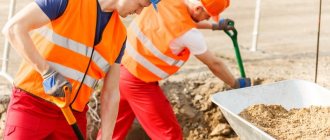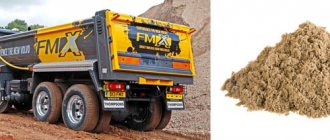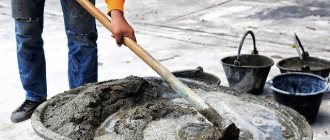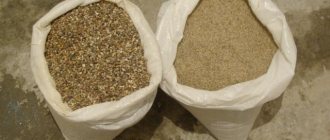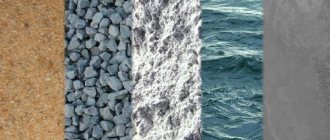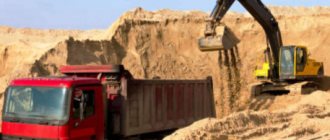How to mix cement with your own hands correctly and in the right proportions
Everyone is needed, and here are the prices. Quarry sand from 350, Washed quarry sand from 490, River sand from 580, Seeded sand from 500, Coarse sand from 620, River sand packaged in bags (in 1m3-24 bags) from 60 rubles/bag! This is 1,440 rubles/cube.
How to prepare and sift sand for plaster
Types of plaster as a finishing method differ, first of all, in the quality of the mixture used. It depends on the ratio of the constituent parts, the size and uniformity of the fractions, and the presence of clay impurities. Accordingly, different preparations are required:
- To apply a rough layer or create reinforced concrete products, it will be enough to remove leaves, pieces of wood, and grass. Such “cleanliness” can be achieved by simply throwing sand from place to place. Branches, sticks, stones, rags and other debris will be separated from the main mass “automatically”.
- Creating a durable, even plaster coating requires a cleaner mixture. However, the calibration of the grain does not matter, as long as it is no larger than 2 - 3 mm.
- To create decorations and fill paths, you need clean, coarse, calibrated (separated) sand. Its fractions should be “one to one”, differing by no more than 0.5 mm.
- Sandblasting work, although not related to plaster, requires similar preparation of the material. Only the fraction needed here is small, 1 – 1.5 mm.
Preparation of mortar for plaster
Preparation of the solution
Anyone can prepare a solution for plaster; there is no difficulty in it. As my friend says, he took cement, added sand before it, crushed it, added water, crushed it again, and so he got a solution. People who do plastering. They will tell you that each operation requires its own solution. That’s why we’ll look at methods for preparing solutions for plastering work. The preparation of any mortar for plaster consists of the following steps. First, you need to prepare the sand. Secondly, different binders are used for different solutions, which also require preliminary preparation. First, prepare all the necessary components, and only then proceed to the actual preparation of the solution.
Cement-sand mortar
To prepare a cement-sand mortar, we need cement, sand, and water. It is better to take quarry sand for plastering work. Preparing sand involves sifting it and removing foreign materials such as clay. For sifting, use full. For spraying and soil, it’s enough to use 3x3 mm glasses for a 1.5x1.5 mm cover. To remove clay impurities, we wash the sand. We check the cement for freshness, to do this we take it in our hand and squeeze it; if it leaks out, then it is fresh and corresponds to its marking, which is indicated on the label. If it becomes a lump, or small lumps remain in your hand, then the cement has lost its properties, and therefore more of it will be needed to prepare the solution. Determined empirically.
Preparation of cement involves sifting it to separate lumps. We measure the prepared material in the required quantities. For example, for plaster you need a solution of grade 100. The question is how to prepare it. In order to prepare a solution, we need to find out what brand our cement is 400 or 500. Our cement is grade 500, then to prepare a solution of grade 100 we need to take one part of cement and five parts of sand. We pour half of the sand into our container, then pour out the entire portion of cement, and add the rest of the sand. Mix all this thoroughly. We get a prance, add water to it, bringing the solution to a sour cream-like mass, which will correspond to 10-13 cm of immersion of a standard cone. This is a method of preparing the solution manually, but if you prepare it using a concrete mixer. The order of preparation is different. We start the concrete mixer, first check its grounding. First add water to the concrete mixer, and then the required amount of sand and cement. Add water until the required thickness is obtained. To prepare a mortar of grade 100, we use approximately 25 kg of grade 500 cement, 10 12-liter buckets of sand and 3-3.5 buckets of water. For stronger solutions we increase the amount of cement, for weaker ones we reduce it.
Cement-lime mortar
To prepare cement-lime mortar, we perform all the same steps as for cement mortar plus preparing lime. Lime is diluted to obtain lime milk, and strained through 2x2 mm glasses. A solution is mixed with lime milk. Adjust to the required consistency by adding water.
Mortar
After preparing all components. The lime mortar is prepared as follows: first, the required amount of lime is given, and sand is gradually added, stirring. Usually take one portion of lime and three portions of sand. To check the strength of the lime mortar, proceed as follows. They take seven bricks and fasten them with lime mortar into a column and allow them to dry. Good mortar should hold a pillar of seven bricks when lifted carefully by the top brick.
Clay mortar
To prepare a clay solution, proceed as follows. I soak the clay a day before until it is completely softened. Next, the clay is filtered through well, with glasses of 2x2 mm, and two to four portions of sand are added to this portion, depending on the fat content of the clay, bringing it to the required consistency.
Lime-gypsum mortar
The preparation of these solutions has a number of features. First, they are prepared in small portions, as they set very quickly within 10-15 minutes. To prepare the solution, first prepare lime milk, and then add gypsum to it. And this solution is used for 10 minutes. Another way is to prepare dry mixtures, which are diluted with water for direct use. An example of such mixtures is putties.
I check the consistency of the solution experimentally, put the solution on a trowel and it should be held on the trowel, but also be mobile. Some people can’t figure out the ratio numbers, for example 1:0.25:6, what do these numbers mean. And they report that the solution consists of two astringent components, the first you need to take one portion of the second 0.25 portions and sand 6 portions. The first number is often asked for the amount of cement. No, only in cement mortars. There is no cement at all in lime-gypsum mortar. Therefore, the first indicates how much lime the second is gypsum and the third is sand. In a cement-lime mortar, the first one will indicate how much cement, the second how much lime and the third how much sand
to the top of the page
Other abrasives for sandblasting equipment
Sandblasting can present a wide variety of specific requirements. Eg:
- thick removable layer;
- low rigidity and viscosity of the coating applied to the surface to be cleaned;
- high strength of unnecessary layer on the material;
- deep penetration of impurity particles into the structure of the processed material.
This list is far from complete. However, it gives a vague idea of the cases that may arise in the work of a sandblasting master. For each of them, qualified personnel can choose one or another special abrasive.
Nickelslag
This material is a product of processing metallurgical waste during the production of nickel and slag. The abrasive is different:
- high hardness;
- complex particle shape;
- quartz content less than 1%;
- increased mass of particles compared to any quartz sand.
Nickel slag is a smart choice if you need a fairly mild treatment while reducing occupational hazards . When handling this material, little dust is generated. In addition, nickel slag can be sieved and reused. This looks even more beneficial if we take into account the small percentage of destruction of abrasive particles and, therefore, minor losses.
Important! You can sift and reuse nickel slag up to 3 times.
Cooper slag
This abrasive is very similar in properties to nickel slag. It is a product of processing metallurgical slag formed during copper production. The differences from nickel slag are as follows:
- the mass of cooper slag particles is high, the impact on the surface is more intense;
- the possibilities of recovery (reuse) are lower, the particles of cooper slag are less durable and are highly destroyed.
Plastic granules
Plastic abrasive is made from resins. These are melamine (forms the decorative surface of furniture chipboards) and amino-aldehyde resins. Both compositions have low strength, so they are used for extremely fine cleaning. This process does not harm the main surface of the material being processed.
Using plastic granules, wooden, plastic, and thin metal products are cleaned. This is mainly work related to restoration, where chemically active substances and solvents cannot be used. Industrial use of plastic abrasives is the cleaning of cultural monuments, antiques and collectibles, and rare items.
Glass granules
Glass bead processing is widely used in industry. With her help:
- gentle cleaning of the surface is carried out;
- processing is achieved without changing the color of the material and its physical properties;
- allows you to obtain a surface suitable for electroplating operations;
- Controlled removal values are obtained, which is of great importance in high-precision processes in mechanical engineering, optical and other instrument making, and watch production.
Glass shot, combining the properties of high rigidity and smoothness of particles, is destroyed extremely little . In addition, the characteristics of the abrasive make it easy to remove impurities from it after use. Thanks to this, glass beads and sandblasting granules can be reused up to 35 times.
Other types of granules and shot
In order not to dwell on each abrasive in detail, it is worth mentioning only the key properties and features of the use of different types of shot for sandblasting.
- Ceramic granules and shot in general are used in the same areas as glass. They show the lowest rates of destruction, so the abrasive can be reused up to 500 times.
- Crushed cast iron and steel shots are used for intense impact on the surface. Used to increase adhesion or local processing, for example, profiling, notching.
- Cast steel and cast iron shots are used not only for cleaning surfaces, but also for strengthening them with impact (hardening); they are used for processing before applying galvanic coatings.
- Stainless steel shot is used for cleaning special alloys and non-ferrous metals. This abrasive has a side effect: the treated surfaces, due to the transfer of tiny particles, acquire protection against corrosion or increase their own parameters.
Each type of fraction has recommendations for use. In some cases, extremely high cost-effectiveness of sandblasting is achieved. In particular, despite its significant cost, ceramic shot is very economical, since it is used up to 500 times.
Natural stone abrasive
Some countries that have sources of natural stone with high levels of hardness and brittleness offer garnet on the market. This is sand made from crushed garnet. When sandblasting, it does not generate much dust. In addition, it has a complex particle shape with many sharp edges, which guarantees an intense, but fairly soft effect on the target surface.
In terms of abrasive characteristics, garnet outperforms quartz sand, nickel slag, and cooper slag. Therefore it is used quite widely.
Electrocorundum
Electrocorundum is intentionally placed at the end of the list. This abrasive has record hardness. According to its properties, it ranks 2nd in the evaluation table, second only to diamond. The use of electrocorundum shows extremely high economic efficiency.
Read also: K3525a description operating principle switching diagram
The abrasive can be collected and reused with virtually no loss. At the same time, the intensity of the impact on the treated surface is not reduced. Electrocorundum particles have a complex shape with many sharp edges, the edges of which have the ability to self-sharpen.
Important! The market offers both primary, smelted electrocorundum and reduced corundum. The latter is made from fragments of abrasive wheels and other materials. It is slightly inferior to the primary one, may contain impurities, but is characterized by a lower price and is therefore attractive for many sandblasting tasks.
Due to its unique hardness properties, this abrasive can be used to work on almost all materials. They can be used to matt or engrave stone, glass, carve metal, and process ceramics.
What kind of sand is needed for.
Catalog
- Non-metallic materials Sand River sand
- Quarry sand
- Sea sand
- Quartz sand
- Coarse sand
- Quicklime
- Granite crushed stone
- Boards Terrace board (Decking)
- Tile adhesives Tile adhesive Osnovit
- Well rings
- Non-woven wallpaper
- Mulching with sawdust What kind of sand is needed for.
Based on materials from the site: https://shpatlevko.ru
What is sandblasting
The sandblasting technique was patented in 1870 by American inventor Benjamin Tillman. If we describe the technology in simple words, we can imagine the surface treatment process as follows:
- an abrasive powder is selected that is specially created or suitable for solving a particular problem;
- a pneumatic compressor acts as a source of energy;
- sand, flying at enormous speed from a specially designed nozzle along with air, hits the surface being treated with force.
As a result of this effect, any dirt and coatings are removed from metal, wood, and plastic.
The highest economic efficiency of application and achieved processing results are offered by simple and common materials. In particular, the usual sifted river sand can be successfully used for sandblasting. In this case, it is possible in a certain way to select, so to speak, the characteristics of the working fluid (for example, particle size) to obtain the desired operating speed and final surface indicators.
However, if you take sand to use with a sandblasting machine, you should understand that this material has both advantages and disadvantages. The latter are so significant that processing with such an abrasive is prohibited in some countries at the legislative level.
Read also: How to make sides for a trailer with your own hands
